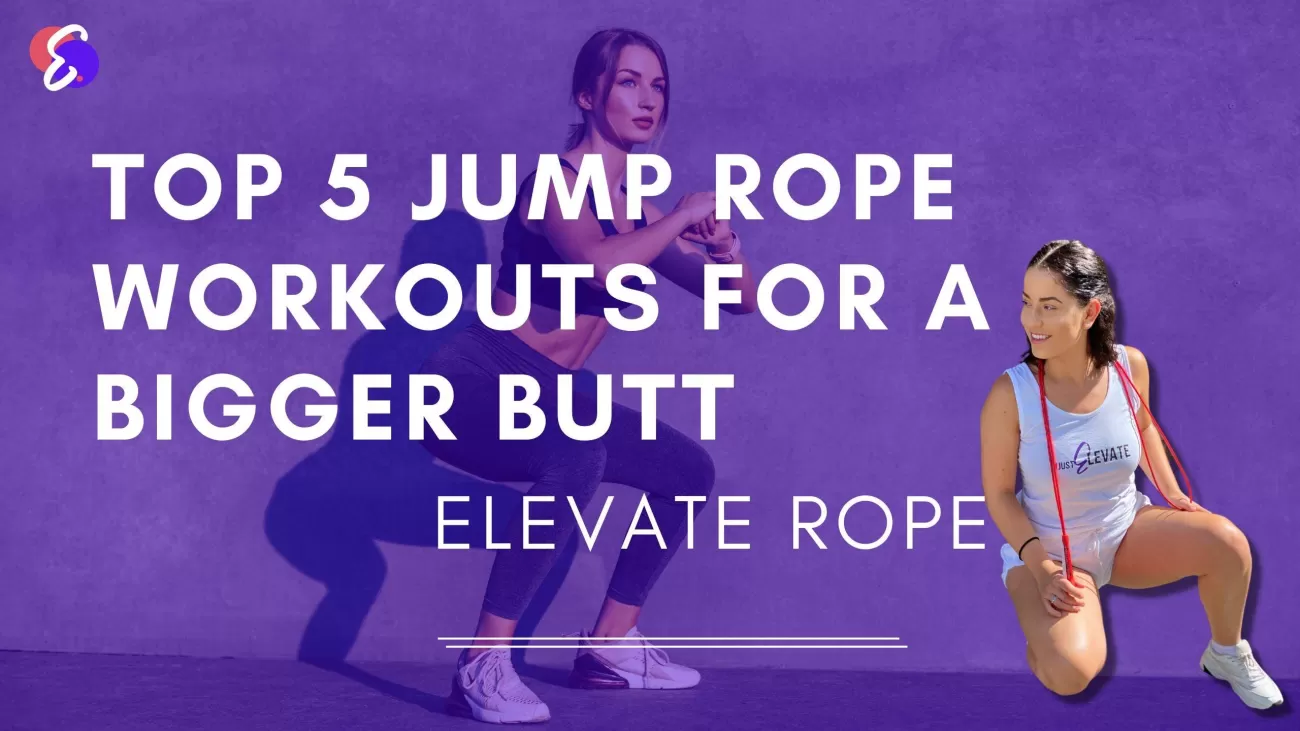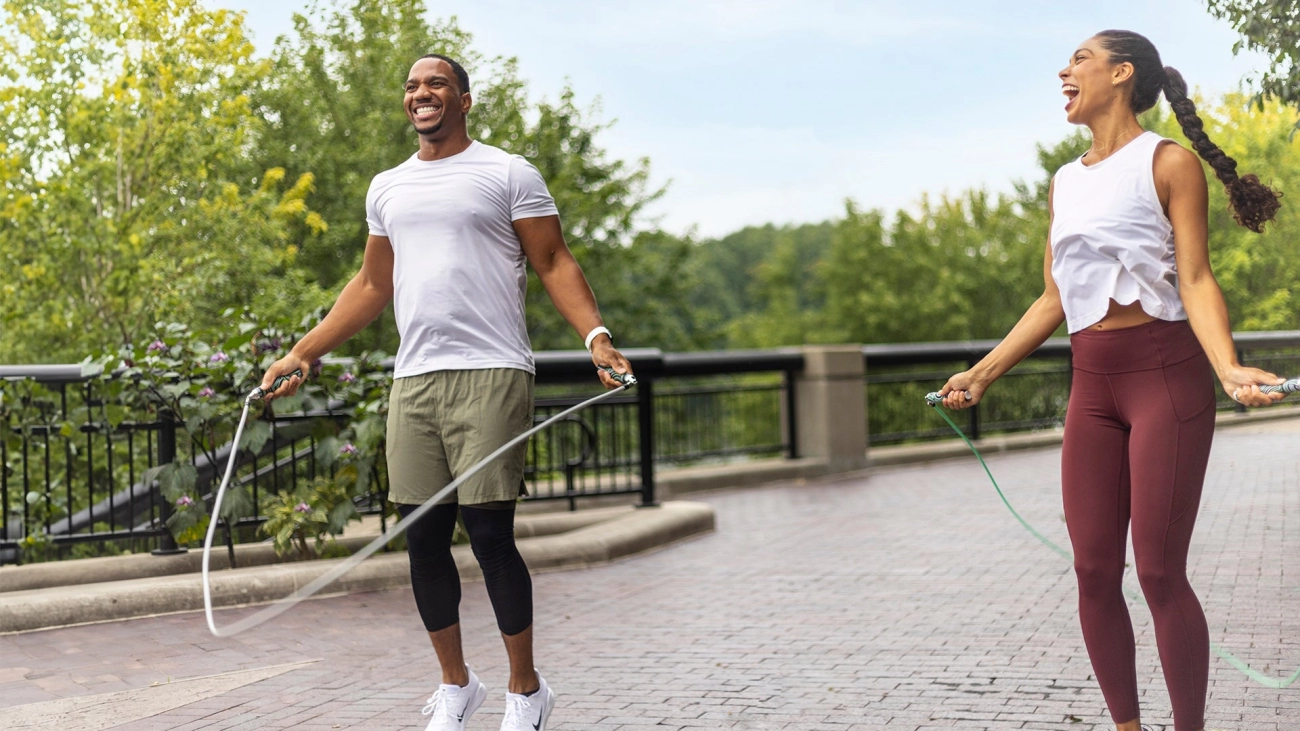Anatomy of the Glutes and Their Role in Exercise
Understanding the glute muscles is essential when asking, Does skipping rope build glutes? The glutes consist of three key muscles: gluteus maximus, gluteus medius, and gluteus minimus. Each plays a unique role in posture, strength, and movement.
- Gluteus Maximus: The largest muscle, responsible for hip extension, outward rotation, and powerful movements like sprinting and climbing stairs. It gives your buttocks their shape and size.
- Gluteus Medius: Positioned on the side of the hip, this muscle stabilizes the pelvis during walking or running and supports lateral movements.
- Gluteus Minimus: The smallest and deepest glute muscle, works alongside the medius to assist with hip rotation and stabilization.
Importance of Strong Glutes
Strong glutes are critical for maintaining posture, improving athletic performance, and preventing injuries. They support the lower back and pelvis, helping distribute forces evenly across your body during activity. Well-developed glutes improve the appearance of your legs and buttocks, making them a popular focus in both athletic training and aesthetic fitness.
How Glute Muscles Grow and Respond to Exercise
Muscle growth, or hypertrophy, happens when muscles are exposed to a combination of mechanical tension, muscle damage, and metabolic stress. These signals prompt the muscle fibers to repair and get stronger.
- To build glutes efficiently, progressive overload is key. This means gradually increasing the intensity of your workouts through heavier resistance or more challenging movements.
- Glutes respond best to exercises that emphasize hip extension and external rotation, along with stability and balance challenges.
Skipping rope can contribute some activation to these muscles, but understanding how the glutes grow helps clarify whether skipping alone is enough for significant glute development or if it should be paired with other targeted exercises.
Does Skipping Rope Engage the Glutes Jump Rope Glute Workout

When you jump rope, your calves, quads, and hamstrings are the primary muscles working hard. These muscles handle most of the impact and movement needed to keep you bouncing smoothly. The repetitive hopping motion mainly targets your lower legs and thighs to maintain speed, balance, and rhythm.
Secondary Glute Activation During Skipping Rope Exercises
While the glute muscles—gluteus maximus, medius, and minimus—aren’t the main movers during skipping rope, they still play a supportive role. The glutes help stabilize your hips and pelvis, which is essential for maintaining good posture and preventing injury during continuous jumping. This means the glutes are engaged as secondary muscles, especially when you maintain an upright torso and active hip extension.
What Science Says About Glute Activation in Jump Rope
Research indicates that traditional skipping rope workouts provide moderate glute activation, but this muscle group isn’t the primary target. EMG studies (which measure muscle activity) on jump rope exercises highlight intense activity in calves and quads, with the glutes activating mainly for stabilization rather than power production.
Experts say that while you will get some glute engagement during skipping, it’s unlikely to be enough for significant glute development by itself. The glutes respond best to exercises with greater resistance and muscle loading that involve hip extension and external rotation, like squats or deadlifts.
- Main muscles worked skip rope: calves, quads, hamstrings
- Glutes are secondary stabilizers during jumping
- Moderate glute activation, mostly for hip stabilization
- Jump rope alone isn’t the best for heavy glute building, but it does help tone and engage lower body muscles
Incorporating jump rope into your workout helps with overall leg and lower body conditioning, including some glute activation, but it’s not the most efficient standalone option for glute growth.
Skipping Rope Techniques That Activate the Glutes Best
When it comes to skipping rope exercises for glutes, not all jumps are created equal. Certain techniques engage the glute muscles more effectively, helping you get the most out of your jump rope sessions for glute activation.
Basic Jump vs Advanced Variations
-
Basic Jump: This is the standard, two-footed jump. It primarily targets calves, quads, and hamstrings, with only minimal glute activation since the movement is mostly vertical and involves limited hip extension.
-
High Knees: Bringing your knees up high with each jump ramps up hip flexor and glute engagement. This movement encourages a stronger hip drive, which helps activate the gluteus maximus and medius more than the basic jump.
-
Butt Kicks: Pulling your heels toward your glutes with each jump works the hamstrings more but also activates the glutes to stabilize the movement, improving muscle coordination around the hips.
-
Double Unders: Swinging the rope twice under your feet in a single jump requires faster hops and more explosive power from the lower body—including the glutes—to maintain speed and stability.
-
Side-to-Side Jumps: Jumping laterally engages your gluteus medius, which helps with hip stability and balance. This variation enhances side glute activation, contributing to better glute tone.
How Variations Influence Glute Engagement
Different skipping techniques shift the focus of muscular work and influence how the glutes fire:
- Movements involving hip extension and lateral movement recruit the glute muscles more than simple straight-up jumps.
- Faster, explosive jumps (like double unders) encourage muscle power development, subtly working the glutes.
- Incorporating variations not only improves glute activation but also helps prevent workout boredom and improves overall coordination.
Tips to Optimize Glute Activation with Skipping Rope
To maximize glute work while jumping rope, focus on:
- Maintain an upright posture: Keep your chest lifted and your core engaged. This helps carry power down through your hips and glutes.
- Drive through the hips: Especially with high knees and butt kicks, imagine pushing your hips forward and slightly squeezing your glutes with each jump.
- Land softly and use your hips for movement: Avoid landing flat-footed or leaning forward. A slight bend in the knees with activation in the hips lets the glutes do more work.
- Add intentional pauses or pulses: For example, pause briefly in the high-knee position to increase glute engagement.
Using these strategies, variations, and focus on form, you can turn your jump rope routine into a more effective butt exercises skipping rope session that complements your overall glute workout plan.
For those looking to pick the perfect rope to enhance these workouts, consider checking out the durable and grip-friendly options at JumpRopeWholesale’s jump ropes collection.
Can Skipping Rope Alone Build Glutes
Skipping rope offers a great workout, but when it comes to building glutes, it has its limits. Muscle growth, or hypertrophy, requires resistance, enough load, and progressive overload—meaning you need to consistently challenge your muscles with heavier or more intense work. Skipping rope mostly provides cardio and endurance training, so it doesn’t supply enough direct resistance to cause significant glute hypertrophy.
Why Skipping Rope Isn’t Enough for Glute Building
- Skipping rope targets fast-twitch muscles in calves, quads, and hamstrings more than glutes. While glutes do get some activation, this isn’t the main focus.
- The exercise’s low resistance load doesn’t create the muscle damage needed for growth. For visible changes in size and strength, your glutes need heavier, targeted loads like those from squats or deadlifts.
- Without adding progressive overload through weight or resistance, skipping won’t push your glutes beyond their current strength.
Best Use of Skipping Rope for Glutes
That said, skipping rope is excellent for:
- Toning and shaping the glutes by improving muscle endurance
- Burning fat around the hips and lower body, helping reveal the muscle underneath
- Increasing cardiovascular fitness and stamina, which supports overall workout quality
- Complementing strength training for a balanced lower body routine
If you’re aiming for a jump rope glute workout focused on tone and endurance, skipping rope is effective. But for real growth, combine it with focused glute exercises.
For the best results, consider pairing your skipping sessions with targeted glute moves like hip thrusts or lunges. You can check out great ropes designed for versatile workouts at JumpRopeWholesale’s jump ropes collection to get started right.
How to Combine Skipping Rope with Glute Focused Workouts
To really build your glutes, skipping rope alone isn’t enough. But when paired with targeted glute exercises, skipping rope becomes a powerful part of a well-rounded workout that combines cardio, endurance, and muscle strength.
Best Glute Exercises to Pair with Skipping Rope
Focus on these proven moves to maximize glute growth and activation:
- Hip Thrusts: Excellent for activating the gluteus maximus, the largest glute muscle responsible for shape and power.
- Squats: A fundamental compound exercise that targets glutes along with quads and hamstrings.
- Lunges: Great for single-leg glute activation and balance.
- Deadlifts: Effective for overall posterior chain strength, heavily engaging the glutes and hamstrings.
Sample Weekly Plan Combining Skipping Rope and Glute Workouts
| Day | Workout Focus | Details |
|---|---|---|
| Mon | Skipping Rope + Glute Strength | 10 min jump rope warm-up + 4 sets hip thrusts, squats |
| Tue | Active Recovery or Light Cardio | 15-20 min steady jump rope session |
| Wed | Glute Focus + Mobility | Lunges, deadlifts, hip mobility drills |
| Thu | High-Intensity Skipping Rope | 15 min varied jumps (high knees, side-to-side) |
| Fri | Glute Strength + Endurance | Squats, hip thrusts + 5 min jump rope cooldown |
| Sat | Rest or Light Activity | Stretching, foam rolling |
| Sun | Combined Full Body | 10 min jump rope + circuit of squats, lunges, deadlifts |
Tips to Maximize Glute Activation with Skipping Rope and Strength Work
- Use skipping rope to warm up and elevate your heart rate before hitting glute strength exercises.
- Focus on good posture during jumps — keep a slight bend in the knees and engage your core to better activate the glutes.
- Incorporate jump rope variations that demand more lower body engagement, like high knees or butt kicks.
- Aim for progressive overload in your strength exercises, gradually increasing weight or reps to promote glute hypertrophy.
- Keep skipping rope sessions short but intense to preserve energy for heavier glute-focused lifts.
By combining skipping rope’s cardio benefits with targeted glute workouts, you can build stronger, toned glutes while improving endurance and overall fitness. This approach fits well with busy lifestyles here in the US, giving you efficient workouts with maximum results.
Benefits of Skipping Rope Beyond Glute Building
Skipping rope isn’t just about working your glutes or lower body—it offers a ton of other advantages that make it a smart fitness choice. Here’s why skipping rope exercises stand out beyond just targeting your butt:
Boosts Cardiovascular Fitness and Coordination
Jumping rope is a powerful cardio workout. It keeps your heart rate up, improving cardiovascular endurance and helping your lungs work more efficiently. At the same time, the rhythm and timing needed develop your coordination and balance, which benefits overall athletic performance.
Effective Calorie Burning for Fat Loss
If you’re wondering how to burn fat around your glutes and legs, skipping rope is a great way to do that. It’s a high-intensity exercise that can torch calories quickly, supporting fat loss and helping reveal the muscle tone you build with other exercises.
Convenient and Cost Effective
One of the best things about jump rope workouts is how easy they are to fit into any routine. Skipping ropes are affordable, portable, and don’t require a gym membership or much space. For many in the U.S., it’s a practical option to stay active at home, work, or on the go.
Supports Injury Prevention and Muscle Balance
Regular skipping strengthens your lower leg muscles, improves joint stability, and promotes better muscle coordination. This helps in preventing common injuries related to imbalance or weak stabilizers, which is especially beneficial if you do other leg or glute exercises regularly.
In short, skipping rope complements glute and leg training by improving your overall fitness, making your workouts more effective and balanced.
Choosing the Right Skipping Rope for Your Fitness Goals
Picking the right skipping rope can make a big difference, especially if you’re focusing on full body workouts and targeting your lower body, including glutes. Not all ropes are created equal, so here’s what to look for to get the most out of your jump rope glute workout.
Key Features for Effective Glute Activation and Lower Body Engagement
- Durability: A sturdy rope handles fast-paced workouts and intense jump rope exercises for glutes without wearing out fast. This means less frustration and more consistent training.
- Weight: Heavier ropes add resistance, helping you engage muscles more deeply, including the glutes and legs. Lighter ropes are better for endurance and speed but might not challenge your muscles as much.
- Grip: Comfortable, non-slip handles improve control and reduce hand fatigue, letting you focus fully on your form and glute activation.
- Rope Length and Adjustability: A rope that fits your height prevents tripping and ensures smooth jumping, which helps maintain good posture for better muscle engagement, especially in the glutes and legs.
Why Choose JumpRopeWholesale for Your Fitness Needs
JumpRopeWholesale specializes in manufacturing quality skipping ropes tailored for serious workouts. Their range includes:
- PVC jump ropes and beaded ropes built for durability and consistent performance.
- Options with adjustable length, weighted handles, and ergonomic grips to match your workout style and help maximize glute activation during skipping rope exercises.
- OEM/ODM services customize ropes to fit specific training demands, supporting effective lower body toning and glute-focused routines.
By choosing a rope designed for your fitness goals, you set yourself up to get the most from every jump, making your glute workouts with a jump rope more effective and enjoyable.
User Testimonials on Skipping Rope for Glute Training
Many fitness enthusiasts and everyday users have shared their experiences with skipping rope for glute workouts. Here’s what they commonly report:
- Improved muscle tone and endurance: Users notice their glutes feel tighter and more engaged after consistent jump rope sessions combined with targeted glute exercises.
- Better glute activation: Several people mentioned that adding variations like high knees and butt kicks while jumping helped them feel their glutes working more effectively.
- Enhanced workout enjoyment and motivation: Many find skipping rope a fun way to boost their cardio and keep their workouts fresh, making it easier to stick with glute-focused routines.
- Complimentary to strength training: Users who paired skipping rope with squats, lunges, or hip thrusts saw faster improvements in glute size and strength.
A common takeaway among those who’ve tried skipping rope for glute building is that jump rope alone helped tone and strengthen their glutes, but combining it with dedicated glute exercises gave the best results.
If you want to explore specific rope types for better durability and grip during glute workouts, check out options like the RPM Skipping Rope or the Rubber Skipping Rope.
In short, skipping rope is a solid cardio and glute activation tool, but pairing it with focused glute exercises really takes your results up a notch.



